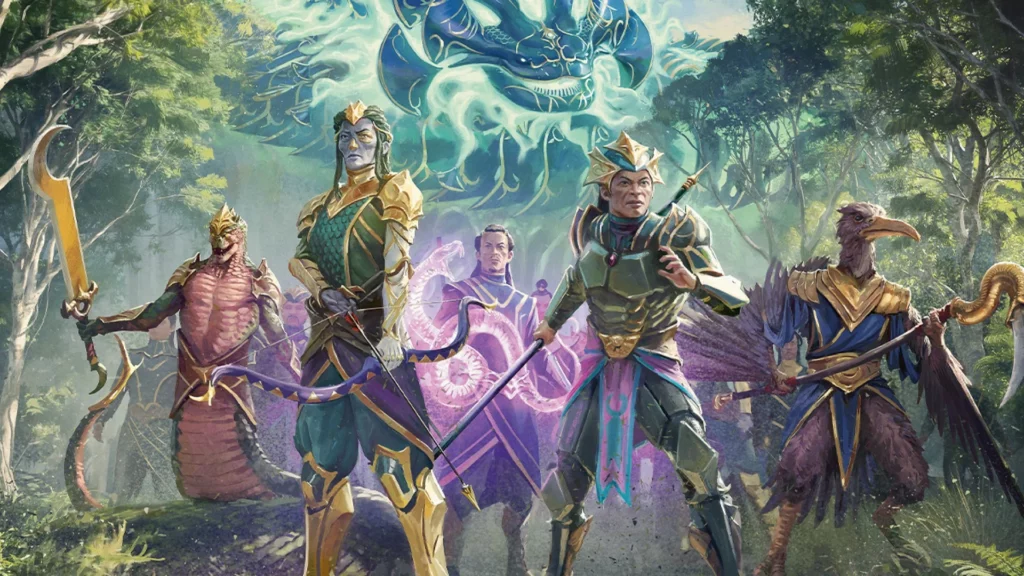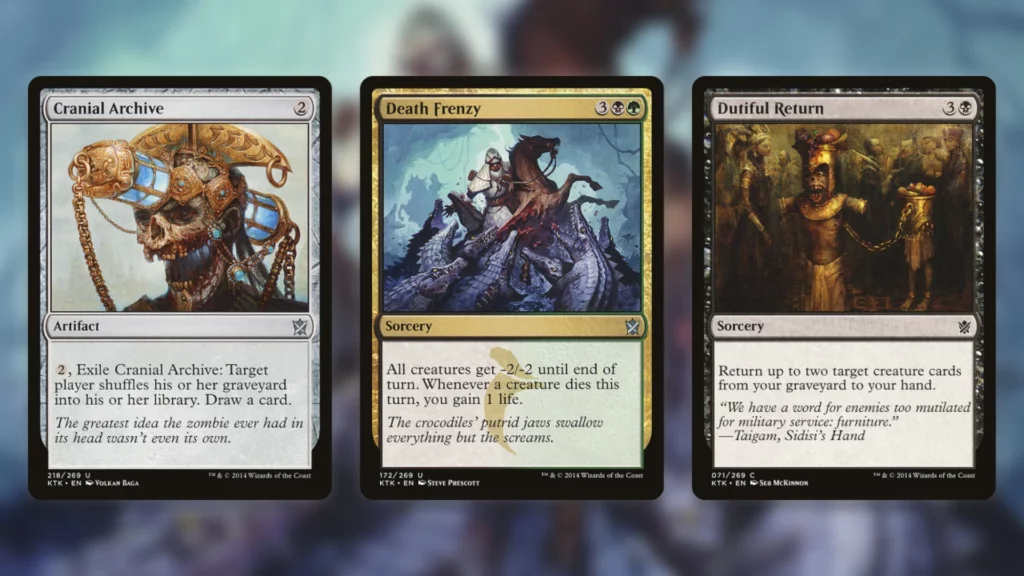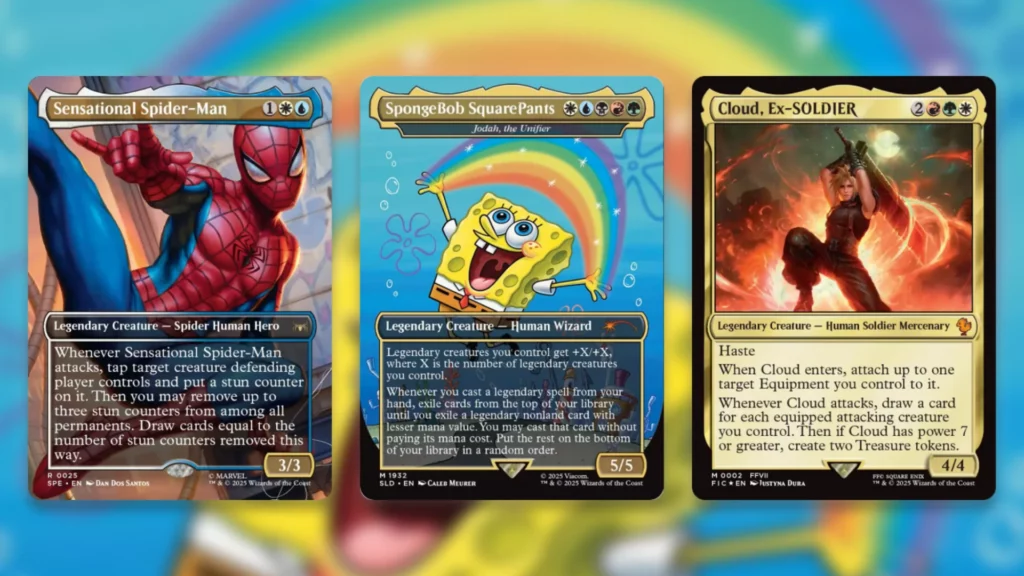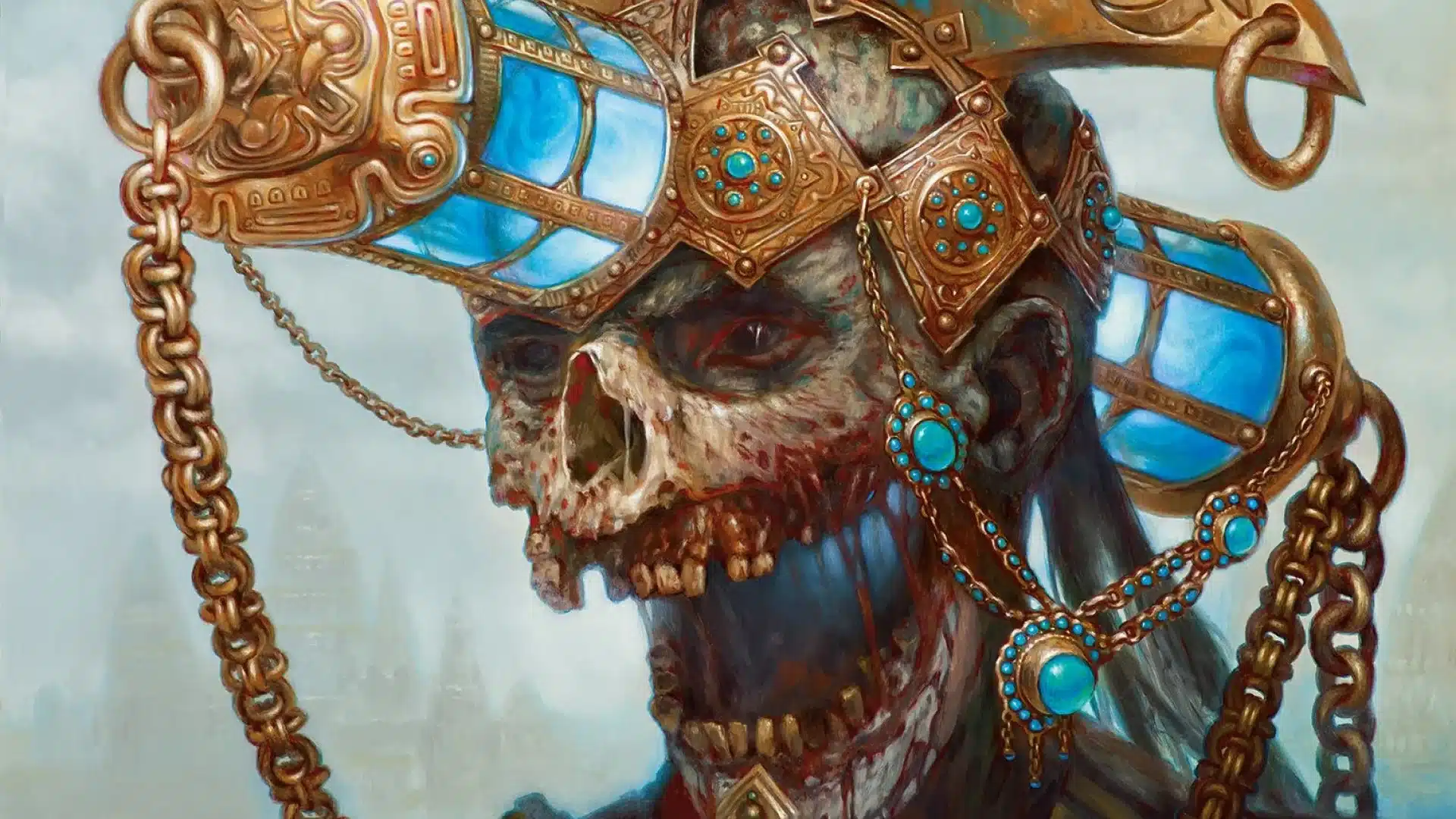It’s less than a week now until the Tarkir: Dragonstorm debut stream will give us a proper introduction to the upcoming Magic: The Gathering set. For many players, the hype is through the roof already. The original Tarkir block was widely beloved back in 2014-2015 and this is the first proper return we’ve had since then. That said, some players are concerned about the set’s visual elements; specifically, how the Sultai are being portrayed in Tarkir: Dragonstorm.
In original Tarkir the Sultai were brutal empire-builders, with macabre artwork that reflected their oddly creative cruelty. In Dragonstorm, so far at least, they look much more generic and colorful. This has many players worried that this revisit to Tarkir won’t recapture the old magic. Unfortunately, this isn’t an isolated incident. Time and again we’ve seen recent MTG sets sand off the rough, difficult edges of the past, leaving less interesting designs in their place.
The Sanitization Of Sultai

Concerns around the depiction of the Sultai in Tarkir: Dragonstorm began over two weeks ago, with the release of the second Planeswalker’s Guide article for the set. This gave us our first glimpse of the clan’s new look and surrounding narrative, which rubbed some players the wrong way. In a dedicated r/MagicTCG thread started earlier today, Televangelis put these concerns into words.
“Tarkir was a portrait of a beautiful and vicious world; something about our return feels… smilier somehow, so far. It makes me miss the art direction of the original, because it was so unique. More generally, I worry that MTG is standardizing too much around a certain “house style” and I miss the sheer range of art styles we’ve historically had.”
Televangelis
Basically, the issue here is one of extreme contrast. Looking back at the original Tarkir block, the Sultai cards were borderline horrific in many cases. The clan owned undead slaves, dealt with their enemies savagely, and even used mutilated corpses as furniture.
The art on these cards wasn’t just dark in terms of subject matter. It often used more muted color palettes that lent the scenes a sense of weight and horror. On the other hand, the new Sultai art from Dragonstorm, as you can see above, is much more colorful and unassuming.
“The art all feels like generic, slapdash MMO nonsense. The kind of stuff I’d see on a gatcha game. The return to Tarkir is a huge disappointment for me. The original felt real, lived-in, and serious. This has goofy dragons and clans that are all now very calm and accepting. A product for everyone is designed for no one.”
TheBuddhaPalm
This isn’t exclusively a Sultai problem, either. All five of the returning clans now have a much cleaner aesthetic, with less of the wartime grit of the original block. Granted, there are narrative justifications for this. Dragonstorm, like Aetherdrift, takes place in the afterglow of a successful revolution, where relations between the clans are much improved over previous timelines. While this makes sense, it doesn’t make the new look and feel any more compelling.
“I am not sure what the impetus is. Maybe it is to appeal to a broader audience, but magic art, in general, has gotten a lot safer. Based on the updated aesthetics of the clans, I am already expecting Raya the Last Dragon, versus KTK or DTK.”
magic_claw
Having planes evolve across multiple visits is a great move, and one that makes Magic: The Gathering feel more dynamic overall. Unfortunately, this is a rare case where more of the same may have been the right call. In moving away from the original block’s darkness, much of what fans used to love seems to have been lost.
Culture Fits

As magic_claw suggests above, a lot of this likely comes down to Wizards wanting to smooth out Magic’s aesthetic in general. There’s been a notable decline in truly dark artwork in the game in recent years. Even Duskmourn, ostensibly a full-on horror set, didn’t leave everyone convinced. The shift to a less hostile Tarkir just feels like another step down this road.
“Tarkir is not a likeable place, but the world building is what’s great. A warring clan and plane is not rosy and loving, it’s brutal and cruel to everyone. Old Tarkir depict a more realistic world, that’s why it’s memorable. “
calaeno0824
Of course, market appeal isn’t the only factor at play here. For the Sultai specifically, Tarkir: Dragonstorm was always going to be a difficult line for Wizards to walk. When Khans of Tarkir came to MTG Arena in 2023, a lot of the Sultai-related art was changed for cultural sensitivity reasons. Specifically, depictions of Rakshasa and undead slaves were altered or removed.
Both of these are thorny elements in 2025, for religious and political reasons. Original Tarkir as a block was obviously riffing on a number of different Asian countries and cultures. While Wizards took more liberties with such material back in 2014-2015, Magic is a much bigger game now. Avoiding risky topics like slavery and horrific violence in Tarkir: Dragonstorm makes a lot of sense in this context, even if it is creatively disappointing for many.
“Old Tarkir was a plane of warlords, new Tarkir one of draconic oppression, but this Tarkir seems to be missing all of those themes in favour of being a positive depiction of Central Asia.”
jerdle_reddit
There are a couple of conflicting responses to this idea. One is that Wizards is dumbing down its sets by removing any potentially problematic elements ahead of time, thereby making them as palatable as possible to the average player. Alternatively, Wizards is simply making the smart move given its new situation.
Now that MTG has a much bigger audience than it did in the past, Wizards has a bigger responsibility to treat the cultures it portrays with respect. Making the Sultai less vicious certainly removes some of the texture of Tarkir, but overall it’s the safer move.
The Universes Beyond In The Room

General edge-smoothing and cultural sensitivity are two possible explanations for the new take on Sultai in Tarkir: Dragonstorm. Another is the greatly increased prevalence of Universes Beyond. In Televangelis’ thread, many players immediately jumped to this as the clear reason behind the switch-up.
“Remember, this set will still be on store shelves when kid-friendly themes like Spiderman and Avatar pop up under the same MTG logo. I don’t think those IPs would be willing to work with Hasbro on UB sets if Hasbro/WotC hadn’t spent the last handful of years intentionally boiling off the game’s “edges”.”
aghanims-scepter
“Nah, that’s not gonna happen anymore. They’re more concerned with being something for absolutely anybody and UB licenses.”
_AngryBadger_
“Unfortunately they have to build their “portfolio” to show other companies that Magic is a blank canvas with which their IP will fit in. The era of style is over.”
Intangibleboot
This logic makes a lot of sense. Wizards have talked up the overwhelming success of Universes Beyond as an initiative on countless occasions. We’re constantly being told how it outsells traditional sets and brings a huge influx of new players into the game. We’ve been shown this too, in the decision to have three Standard-legal Universes Beyond sets a year.
With this being the case, releasing a traditional ‘grimdark’ fantasy set, the likes of which Magic: The Gathering used to see regularly, has the potential to jeopardize IP partnerships. While long-time MTG players would likely respond well to such a set, newer players raised on the ‘smoother’ modern sets may not.
The point aghanims-scepter raises, about the kid-friendly nature of Universes Beyond, is valid as well. While Final Fantasy is a fairly all-ages franchise, Spider-Man and Avatar: The Last Airbender are firmly in the ‘kids’ category. They have plenty of adult fans, of course, but both franchises typically take a children-first approach, which precludes any truly violent, mature content.
It would be a shame if this restriction spread over to mainline Magic sets as well, but that appears to be exactly what’s happening. The sanitized Sultai of Tarkir: Dragonstorm is just one example. Soon true darkness may be a stranger to MTG, just as it is to so many mainstream franchises.

